UCL East Marshgate seeks to redefine the university campus of the future
UCL East Marshgate by Stanton Williams is completed and gears up to welcome its students in east London
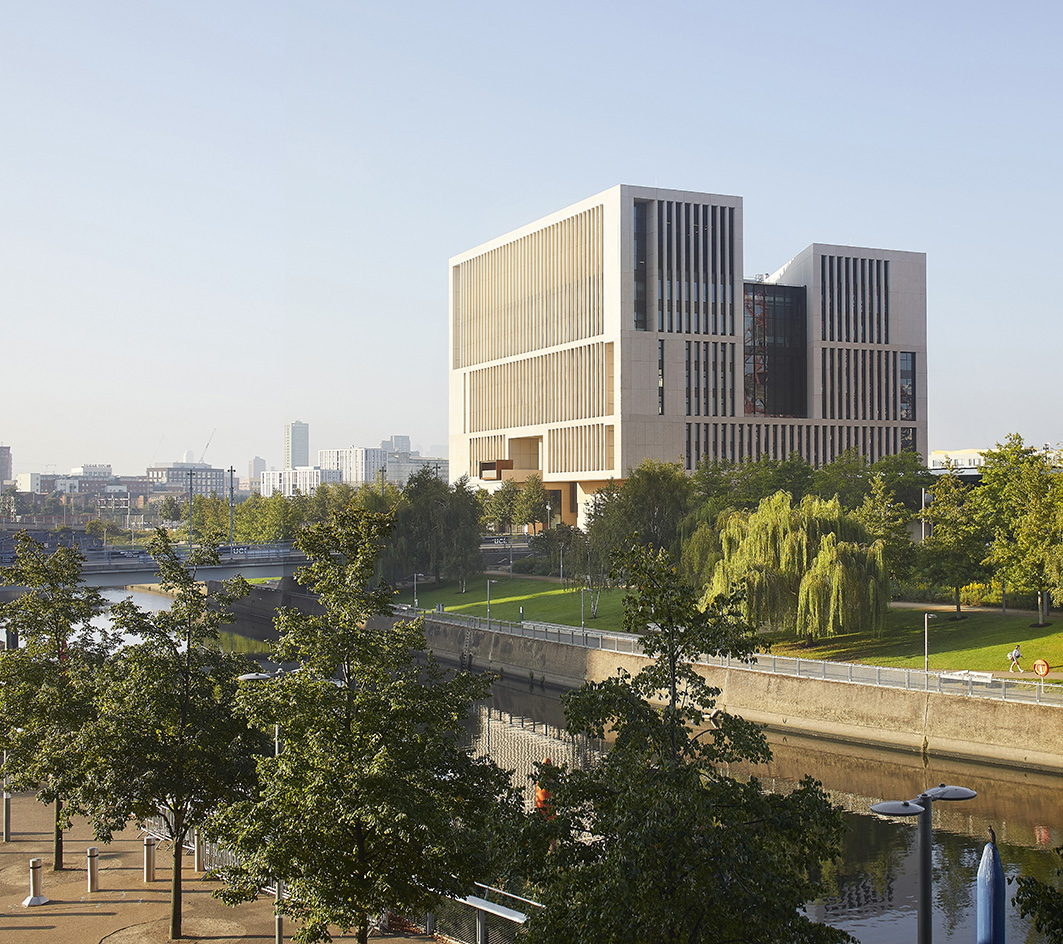
Seeking to redefine what a university campus is, UCL East Marshgate is preparing to throw open its doors to its students later in September 2023. The new building, set in the Queen Elizabeth Olympic Park and designed by Stanton Williams, was conceived with high ambition in mind; at the same time, it was born out of rigorous, methodical research and gentle collaboration between architects, academics, students and staff, trying to carve out the space needed for learning to flow and human knowledge to advance.
'We wanted a campus that in a way redefined what a campus is, and how we train the future generation of students and innovators,' says Professor Paola Lettieri, pro-provost of UCL East.
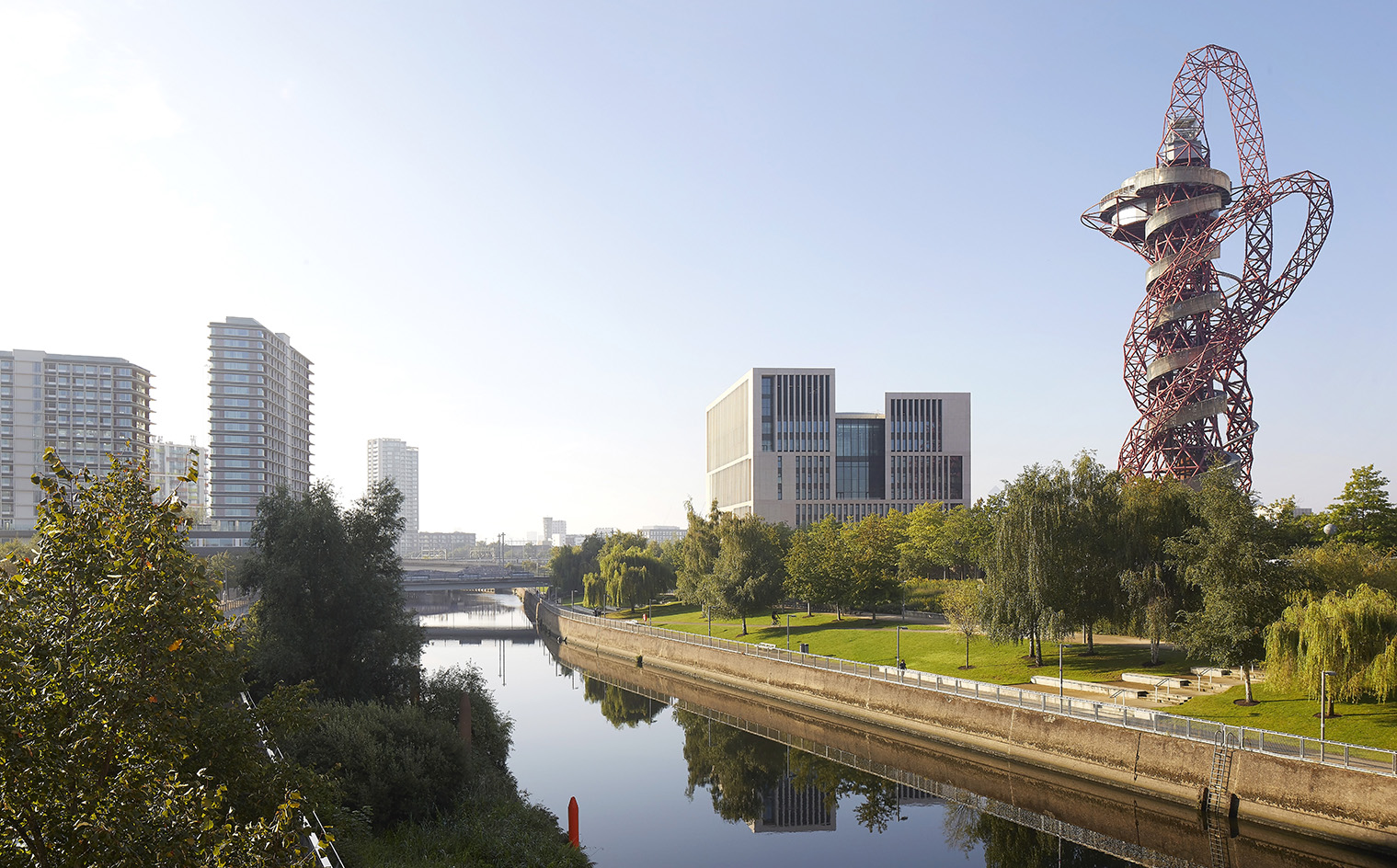
UCL East Marshgate: designing the university campus of the future
From the architects' perspective, designing UCL East was about 'breaking down siloes, collaboration and connecting disciplines. It was also about thinking about how those facilities might work in 20 years time, in the future,' says Gavin Henderson, principal director at Stanton Williams. The fields housed in side include the creative industries, engineering, robotics, green technologies and global health.
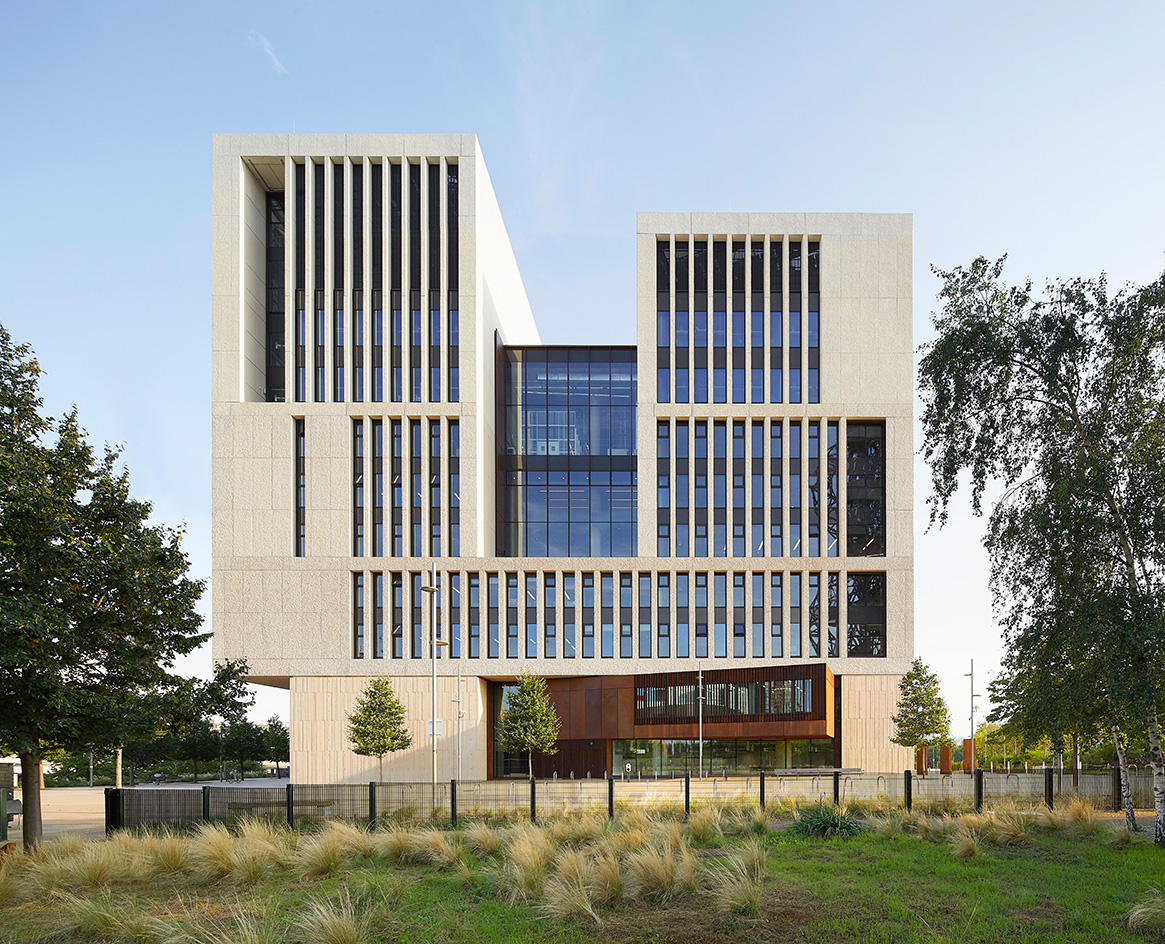
The result is a building of considerable size, which was carefully articulated, a volume carved according the light, use and orientation, while following the outline offered by the area's masterplanners. A permeable atrium in the centre connects various uses and the indoors to the outdoors.
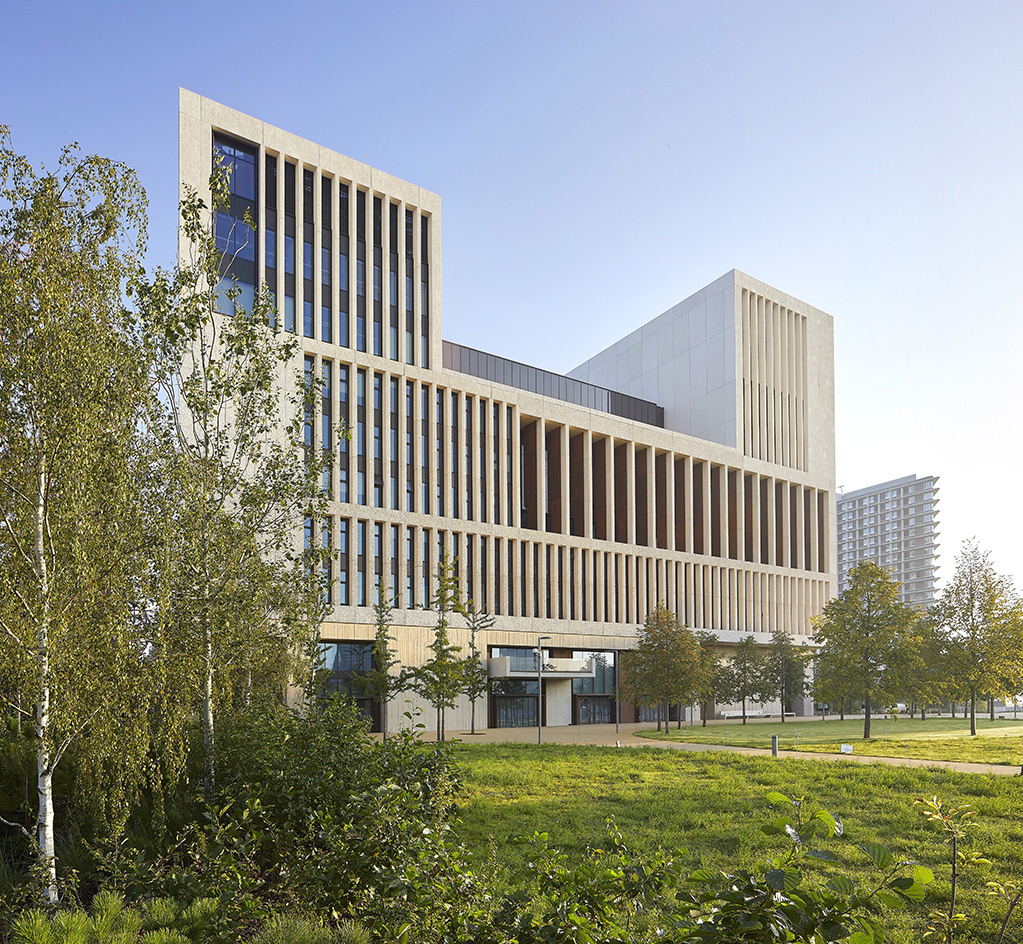
This fluid public zone on the ground level spans the height of the building and has an 'almost urban quality' to it. Upstairs are the academic areas, organised in 'vertical neighbourhoods', that is clusters of two to three floors with a shared collaboration space each (Sheppard Robson was a joint interior architect for the scheme).
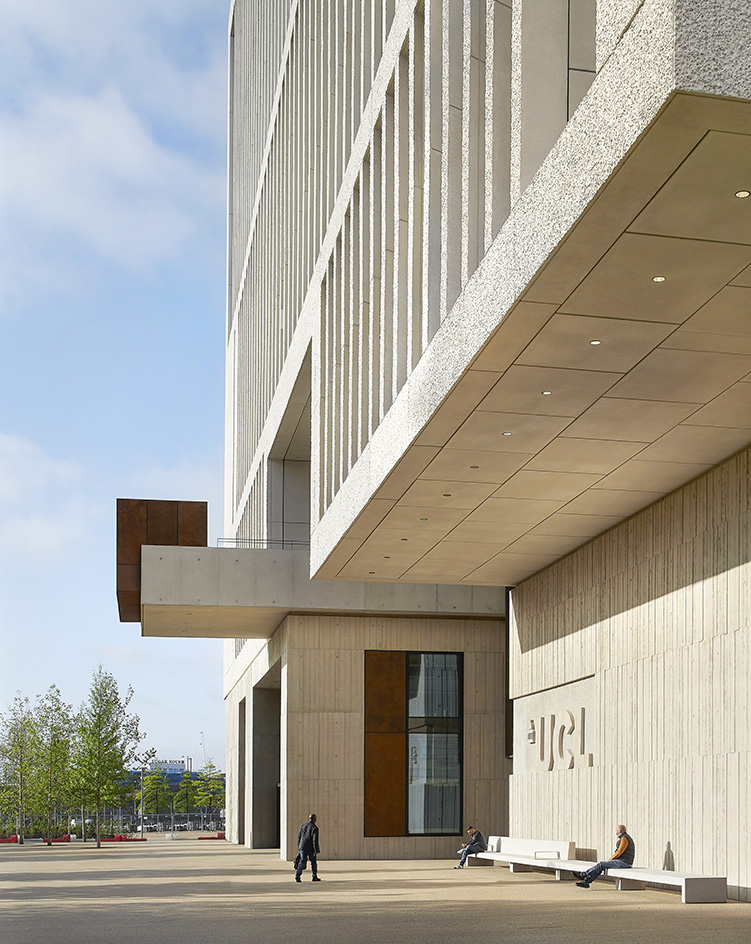
This distinction between public and more private spaces is subtly visible inside by a set of glass barriers that mean only staff, students and their guests can go beyond a certain point; but this can also be read through the building's materials. Rough textured precast concrete panels that nod to the gravel of the river on site dominate the exterior, but weathered steel highlights entrances and encases the areas that are accessible to all, creating a language that begins to map out what goes on inside.
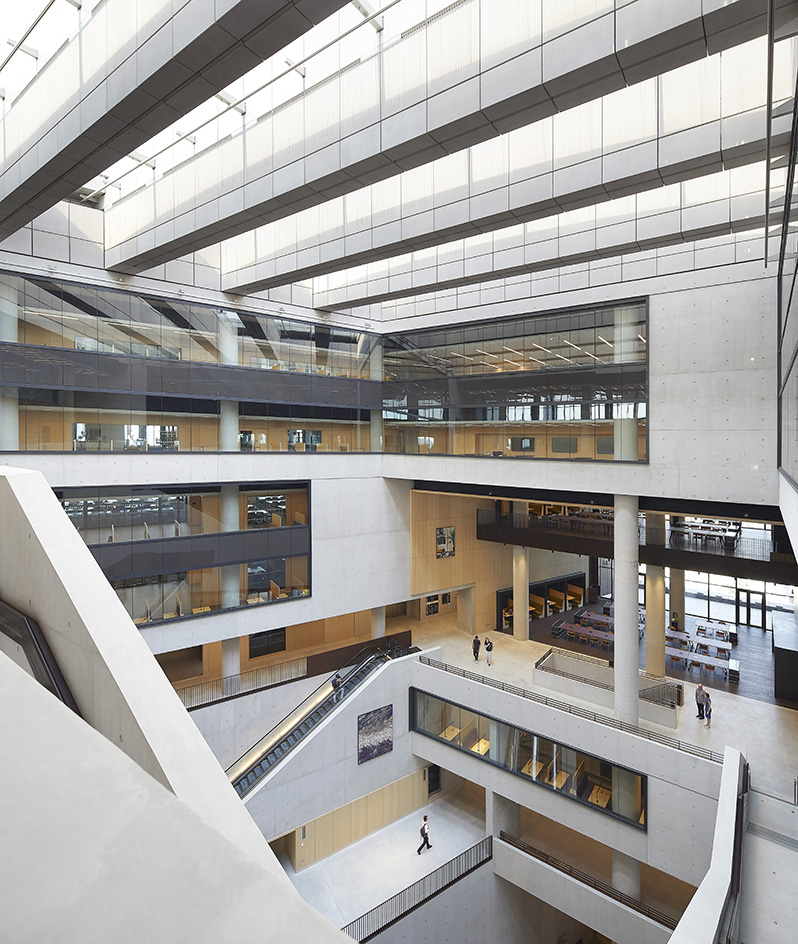
The client and architect team stress that the ground floor café and the atrium's open space are there to encourage the public to wander in, and stay for a bit. A rotating art display aims to bring a public art twist to this concept too.
Receive our daily digest of inspiration, escapism and design stories from around the world direct to your inbox.
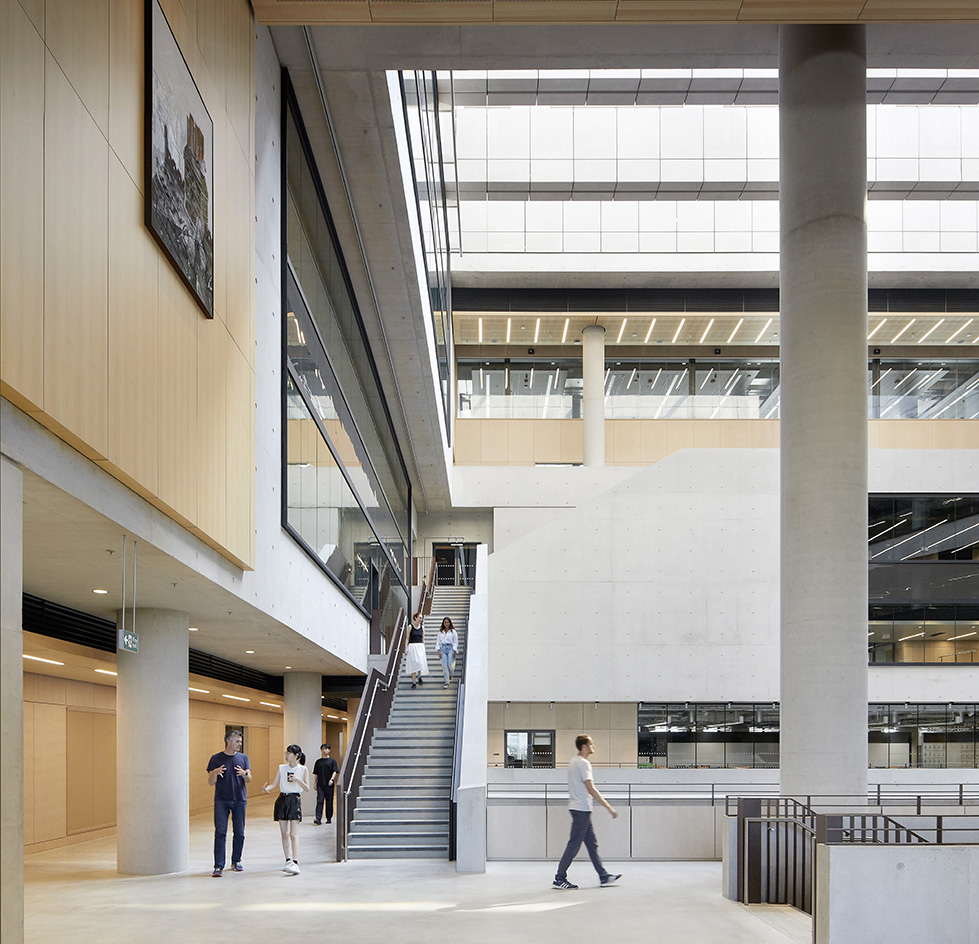
The communal, flexible areas are naturally ventilated, as part of the design team's efforts to reduce the building's energy consumption – although the architects explain that heavy-use teaching areas had to be mechanically ventilated. Still, savings made up elsewhere meant that this building was rated BREEAM Excellent for its environmental qualities, aiming to reach 'net zero carbon by 2035 in keeping with the district’s wider sustainable energy strategy'.
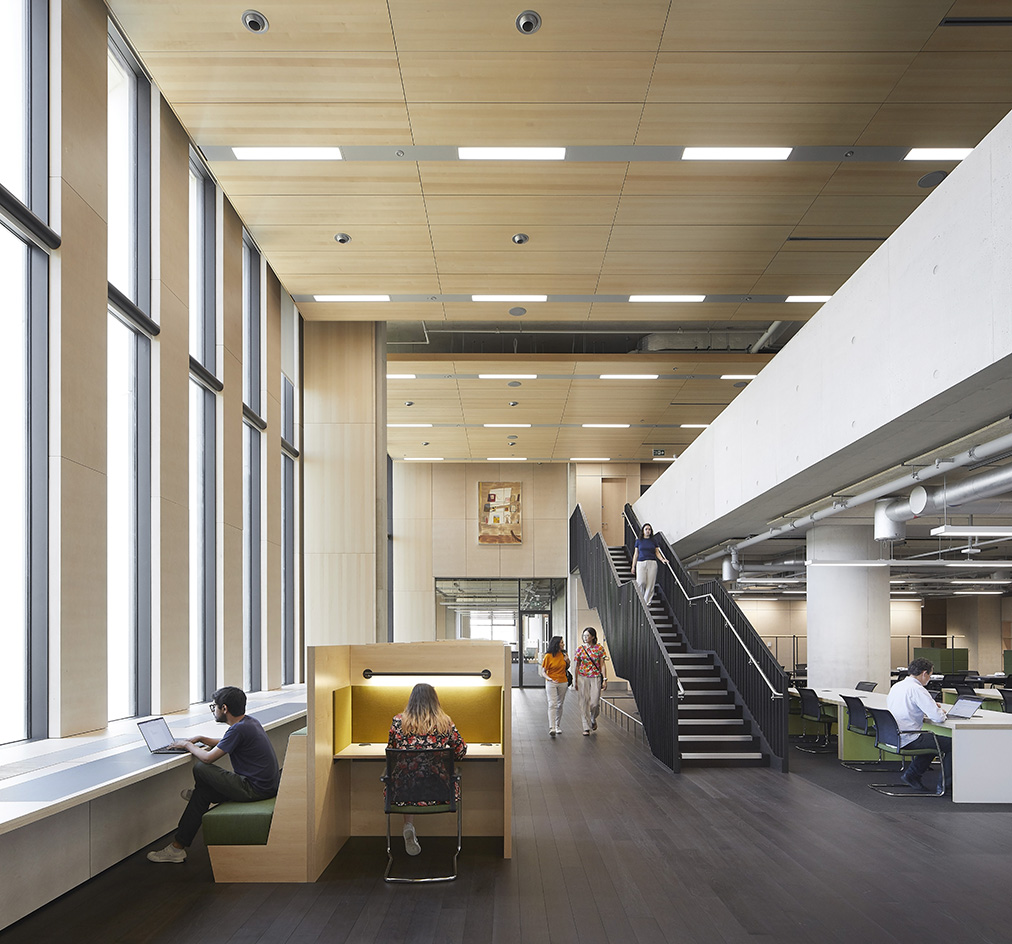
'Drawing on the legacy of Lee Valley's industriousness and creativity, and the exceptional cultural and landscape setting of the Queen Elizabeth Olympic Park, Marshgate will be a place of curiosity, learning and collaboration. A place that engages with the surrounding city to create a new kind of university experience that balances a sense of permanence with a designed in flexibility that will both facilitate and embrace the rapidly evolving nature of academic practice,' Henderson says.
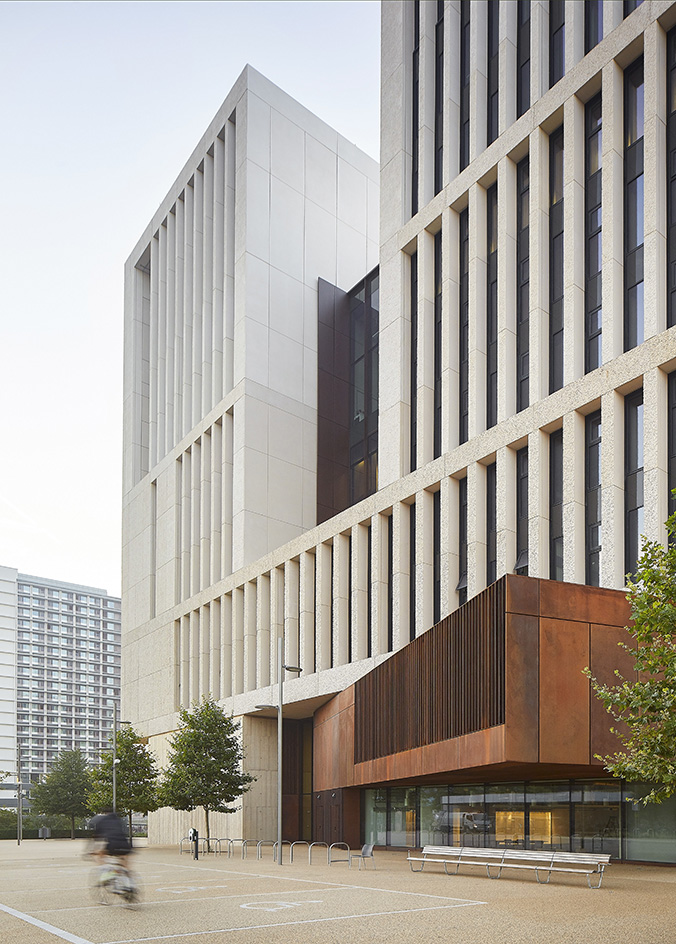
Ellie Stathaki is the Architecture & Environment Director at Wallpaper*. She trained as an architect at the Aristotle University of Thessaloniki in Greece and studied architectural history at the Bartlett in London. Now an established journalist, she has been a member of the Wallpaper* team since 2006, visiting buildings across the globe and interviewing leading architects such as Tadao Ando and Rem Koolhaas. Ellie has also taken part in judging panels, moderated events, curated shows and contributed in books, such as The Contemporary House (Thames & Hudson, 2018), Glenn Sestig Architecture Diary (2020) and House London (2022).
-
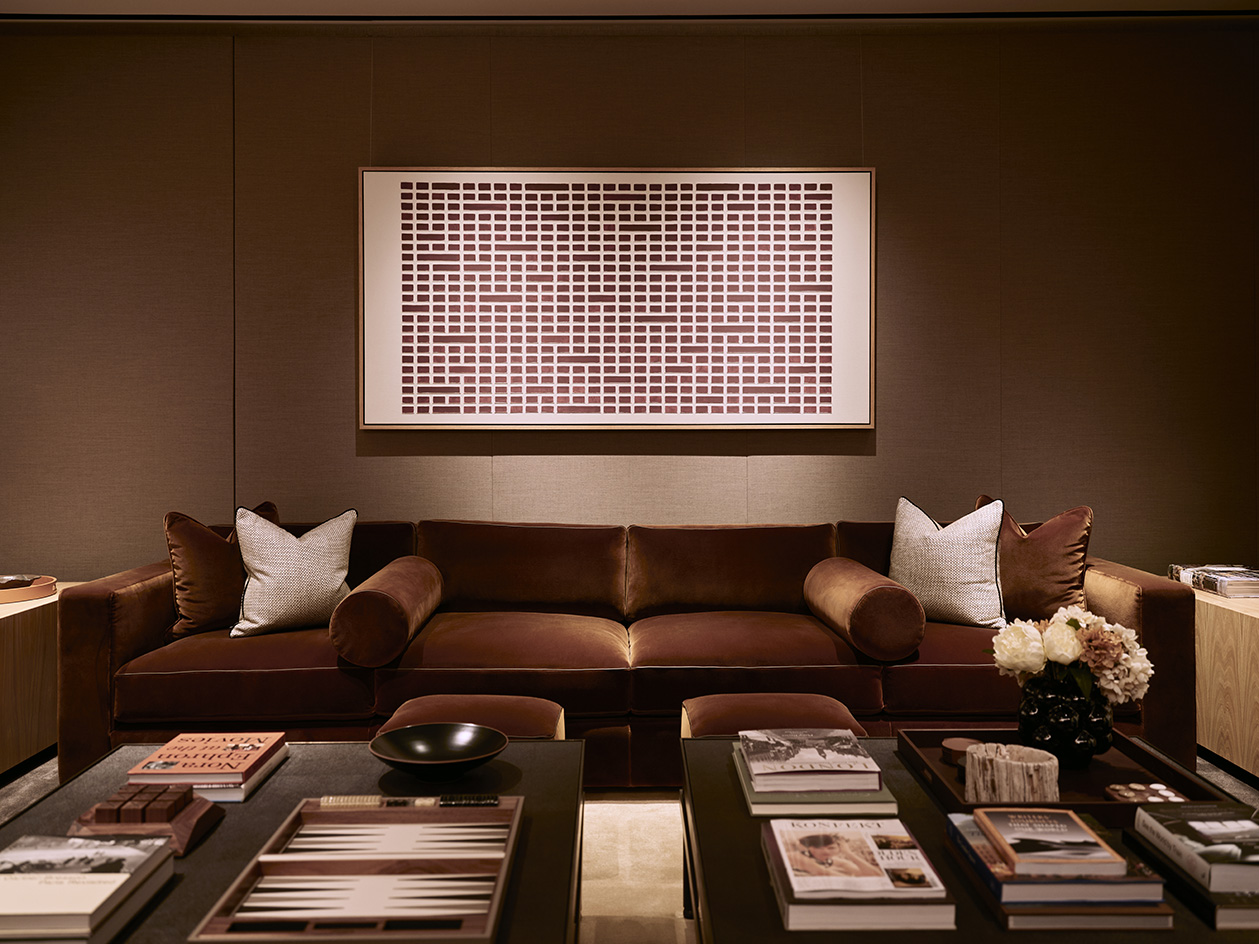 100 George Street is the new kid on the block in fashionable Marylebone
100 George Street is the new kid on the block in fashionable MaryleboneLondon's newest luxury apartment building brings together a sensitive exterior and thoughtful, 21st-century interiors
-
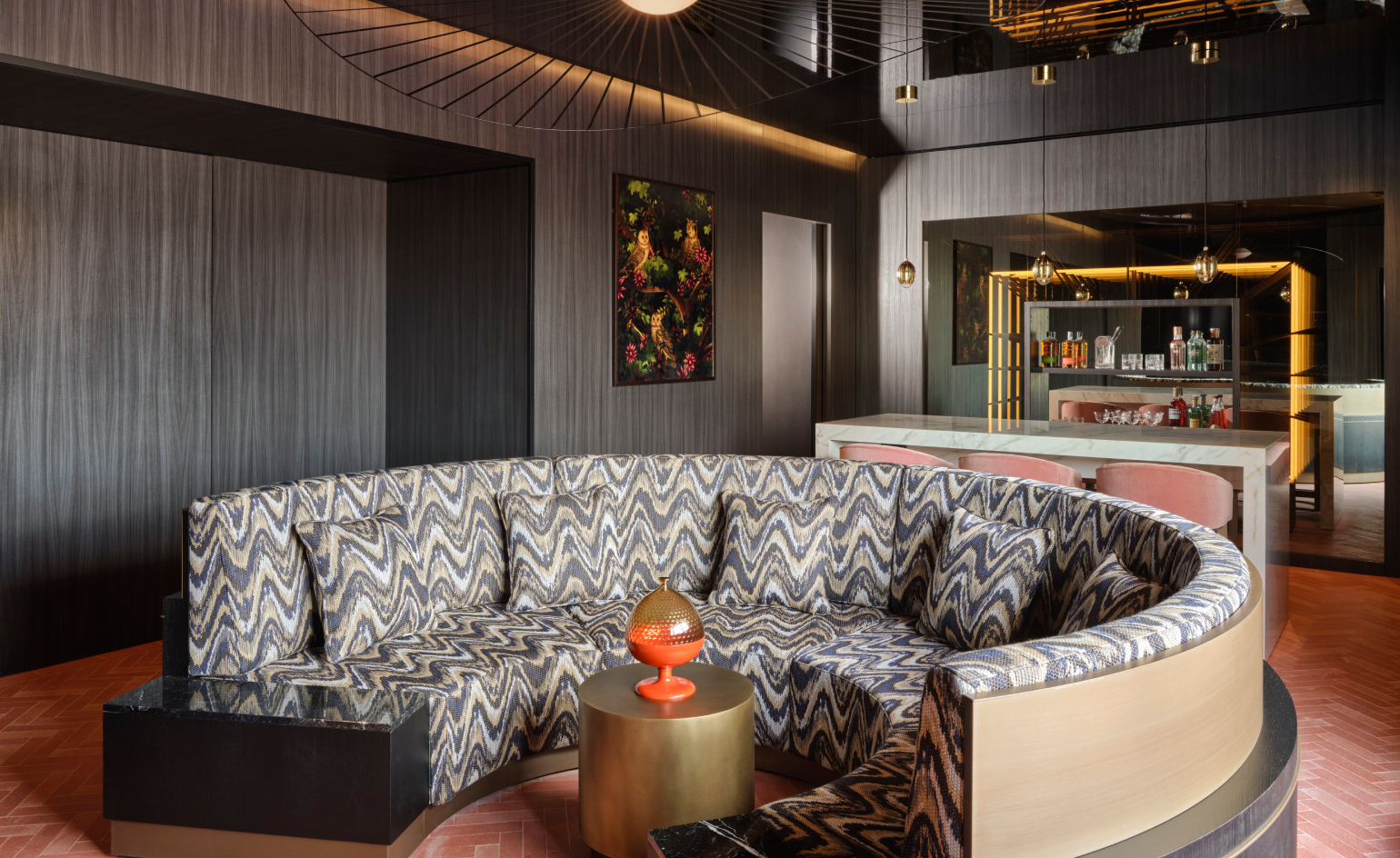 Experience the cradle of the Renaissance in a new light at Florence’s W hotel
Experience the cradle of the Renaissance in a new light at Florence’s W hotelFlorence’s palazzi, basilicas and baptistries groan with history. But the city’s new W hotel poses an alternative perspective – one that is distinctly modern
-
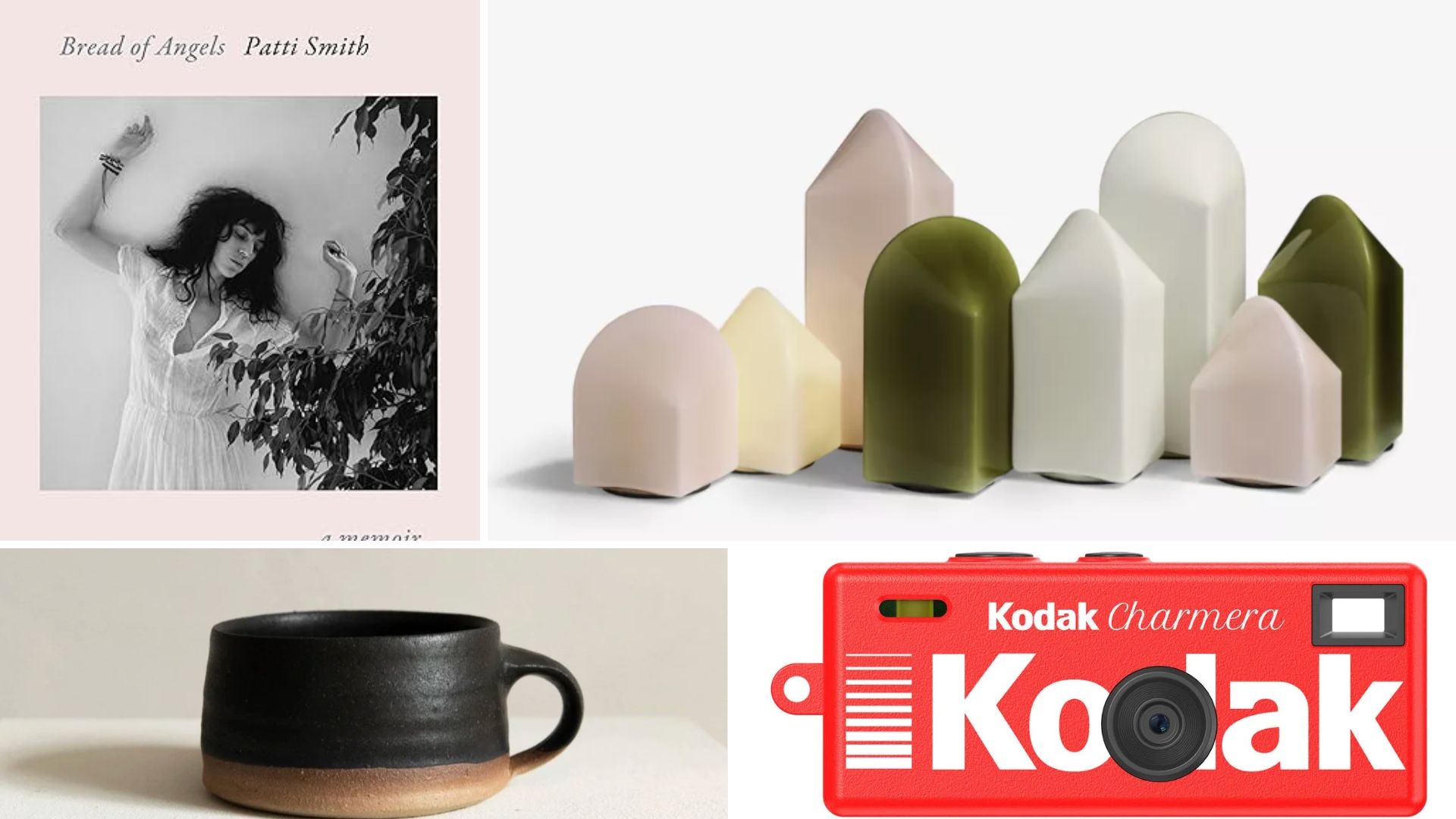 Wallpaper* Gift Guides: What our director of digital content, Charlotte Gunn, has on her wishlist this year
Wallpaper* Gift Guides: What our director of digital content, Charlotte Gunn, has on her wishlist this yearFrom the year's most-anticipated music biography to stacks of vinyl, these goodies will help you unwind and unplug
-
 100 George Street is the new kid on the block in fashionable Marylebone
100 George Street is the new kid on the block in fashionable MaryleboneLondon's newest luxury apartment building brings together a sensitive exterior and thoughtful, 21st-century interiors
-
 Take a tour of Retrofit House, the live showcase inspiring sustainable homebuilding
Take a tour of Retrofit House, the live showcase inspiring sustainable homebuildingRetrofit House, a showcase for residential redesign using biomaterials and environmentally smart methods, opens in Birmingham, UK, spearheaded by Civic Square, Dark Matter Labs and Material Cultures; we paid it a visit
-
 How Maggie’s is redefining cancer care through gardens designed for healing, soothing and liberating
How Maggie’s is redefining cancer care through gardens designed for healing, soothing and liberatingCancer support charity Maggie’s has worked with some of garden design’s most celebrated figures; as it turns 30 next year, advancing upon its goal of ‘30 centres by 30’, we look at the integral role Maggie’s gardens play in nurturing and supporting its users
-
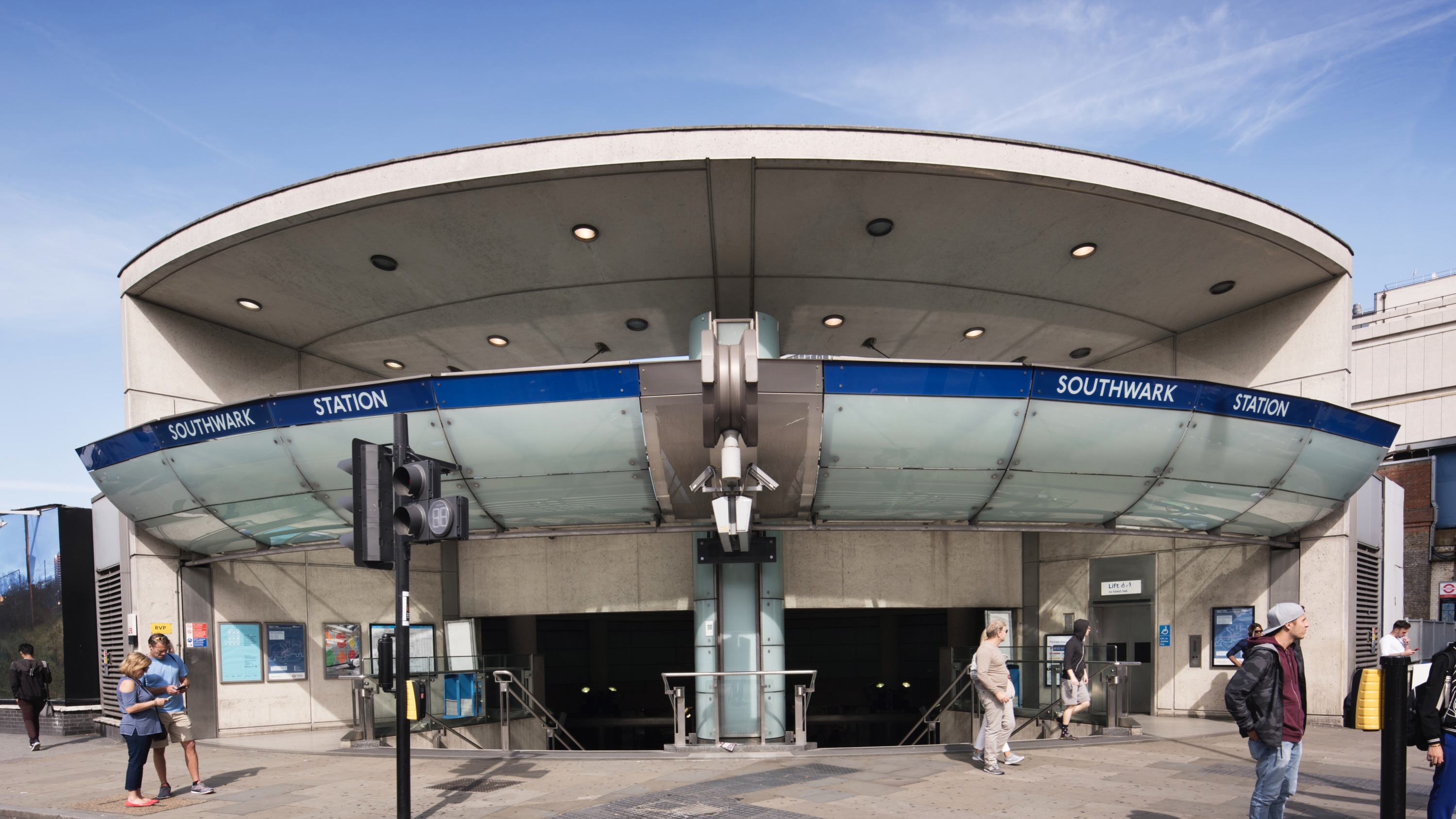 Futuristic-feeling Southwark Tube Station has been granted Grade II-listed status
Futuristic-feeling Southwark Tube Station has been granted Grade II-listed statusCelebrated as an iconic piece of late 20th-century design, the station has been added to England’s National Heritage List
-
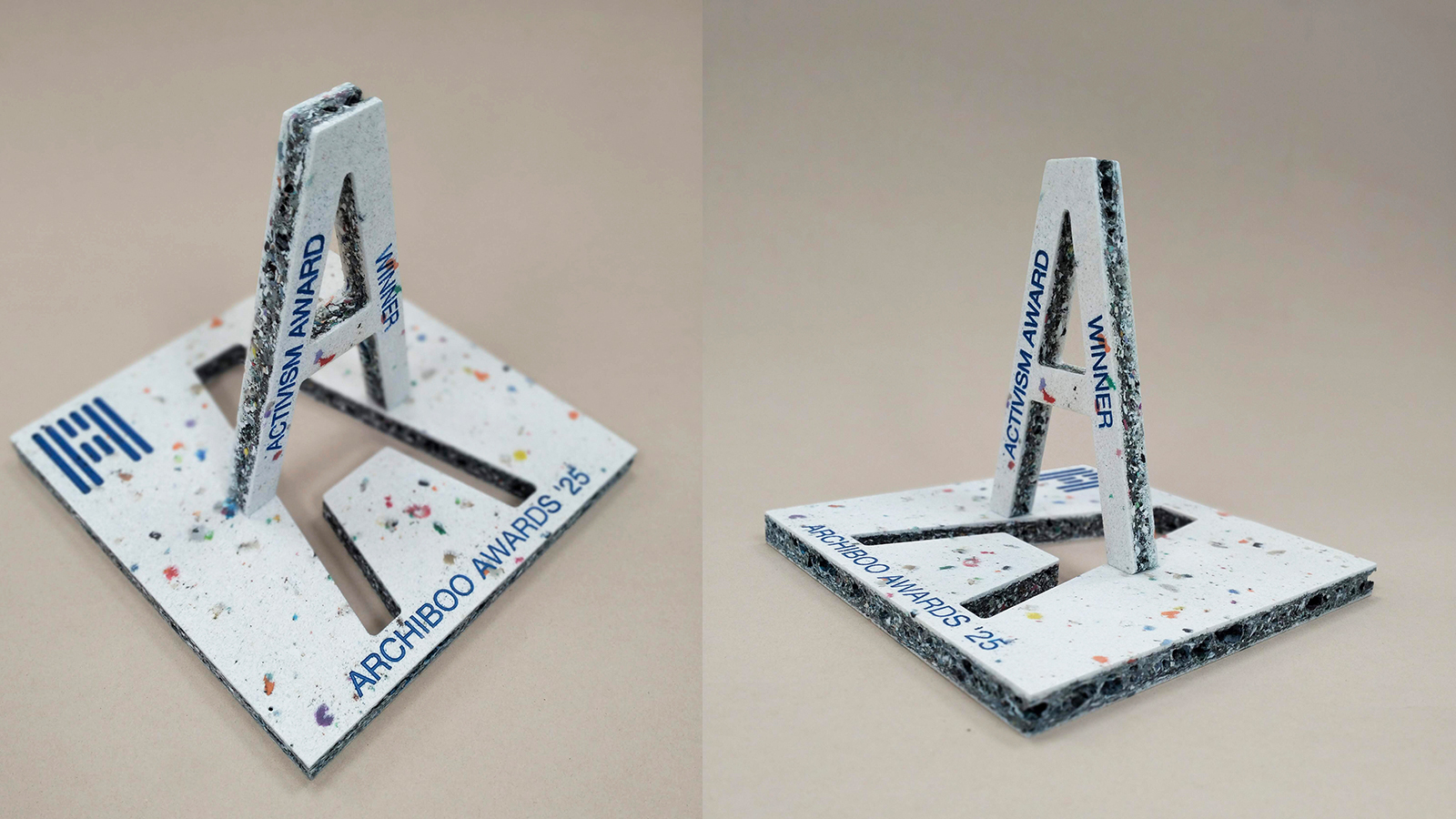 Archiboo Awards 2025 revealed, including prizes for architecture activism and use of AI
Archiboo Awards 2025 revealed, including prizes for architecture activism and use of AIArchiboo Awards 2025 are announced, highlighting Narrative Practice as winners of the Activism in architecture category this year, among several other accolades
-
 Backstage at the Old Vic is all about light, theatre and sustainable action
Backstage at the Old Vic is all about light, theatre and sustainable actionThe theatre's new creative hub by Haworth Tompkins has completed, bringing a distinctly contemporary and colourful addition to the popular theatre space in South London
-
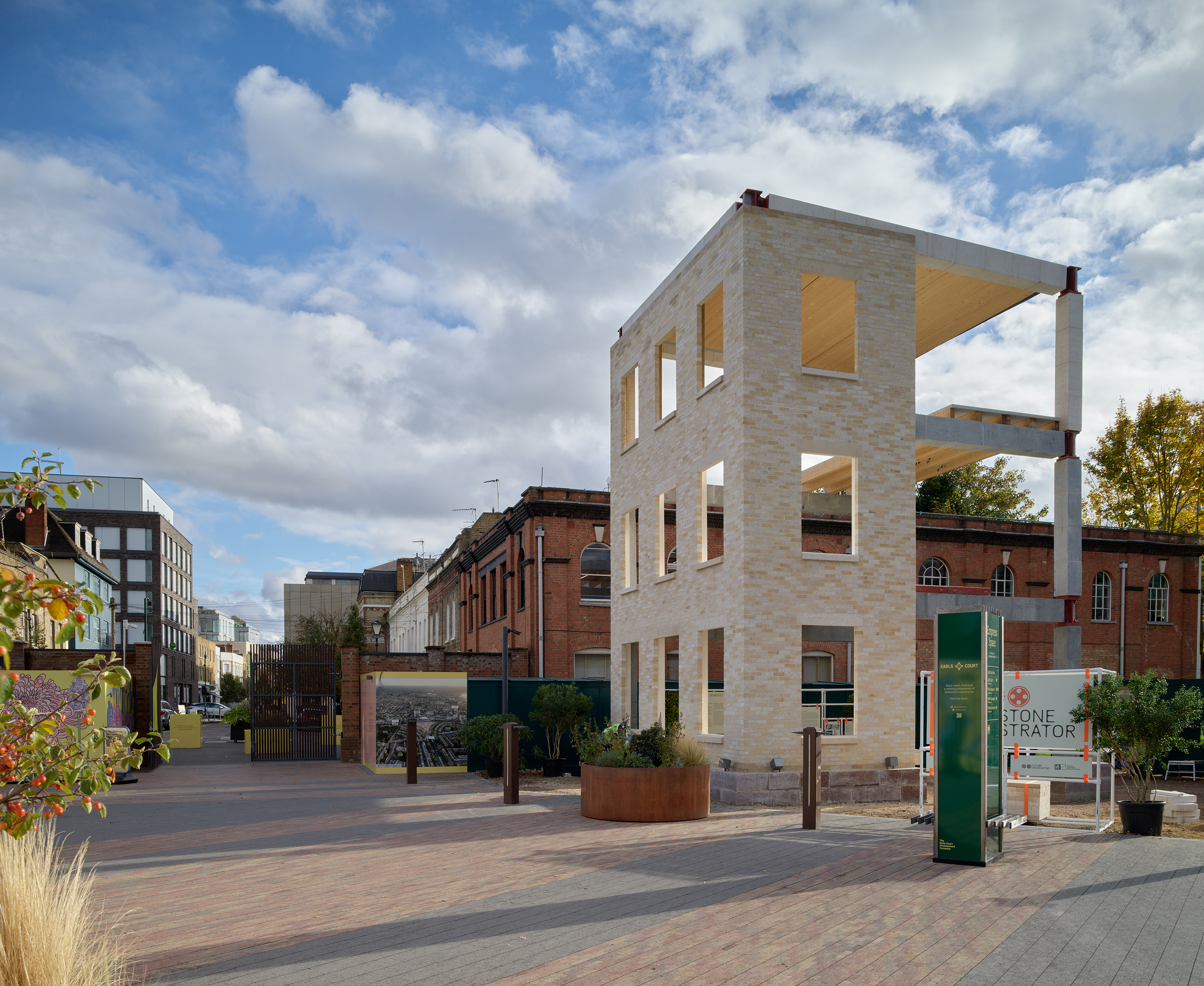 Tempted to try building with stone? This project will convince you of its merits
Tempted to try building with stone? This project will convince you of its meritsWelcome to the Future Observatory's The Stone Demonstrator, a project conceived to show off the material's strong points, now on display in West London
-
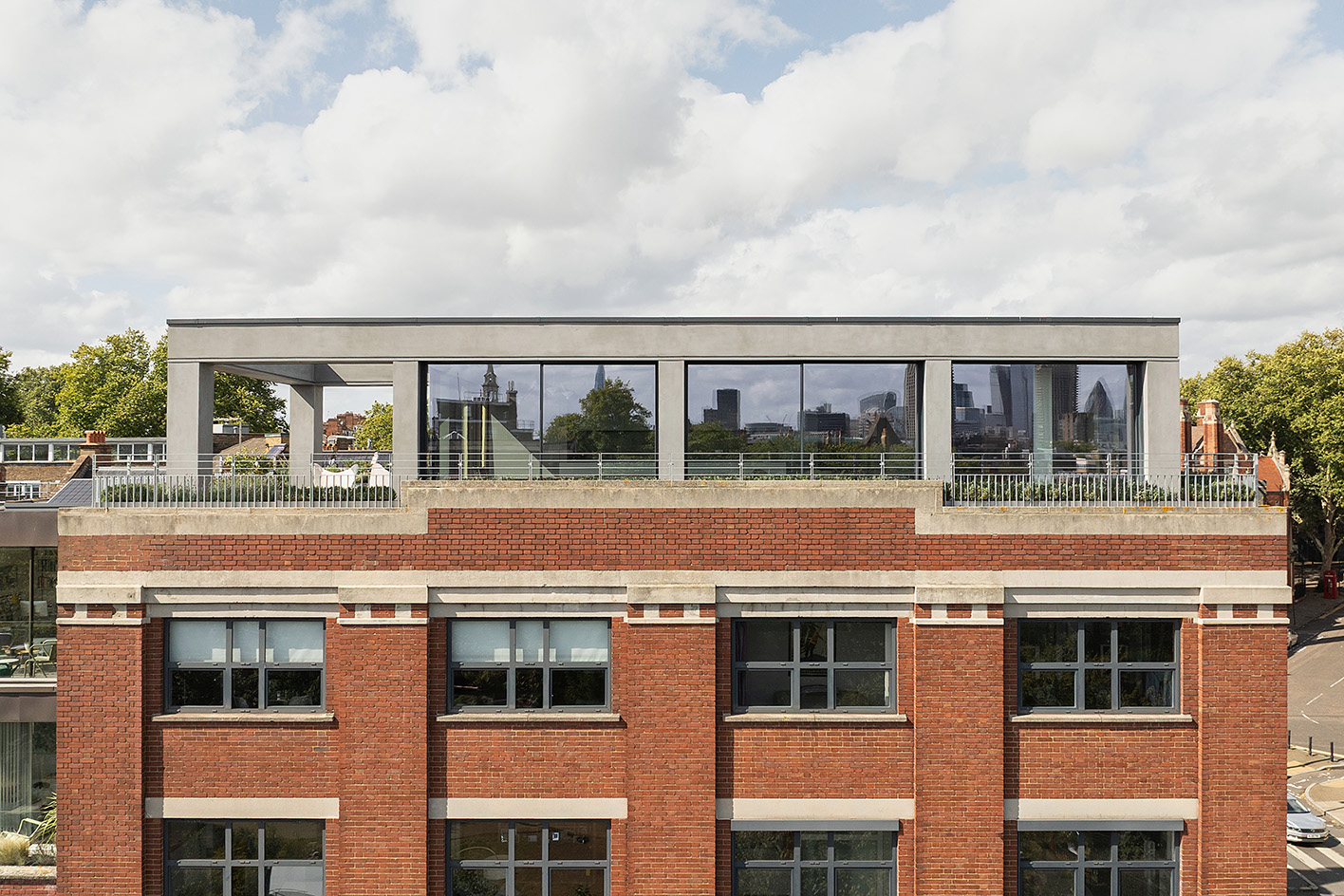 Step inside this Clerkenwell Rooftop, transformed into a minimalist urban abode
Step inside this Clerkenwell Rooftop, transformed into a minimalist urban abodeA Clerkenwell Rooftop has been transformed by Studio Felicity Bell into a minimalist modern home, featuring airy interiors and long views of London